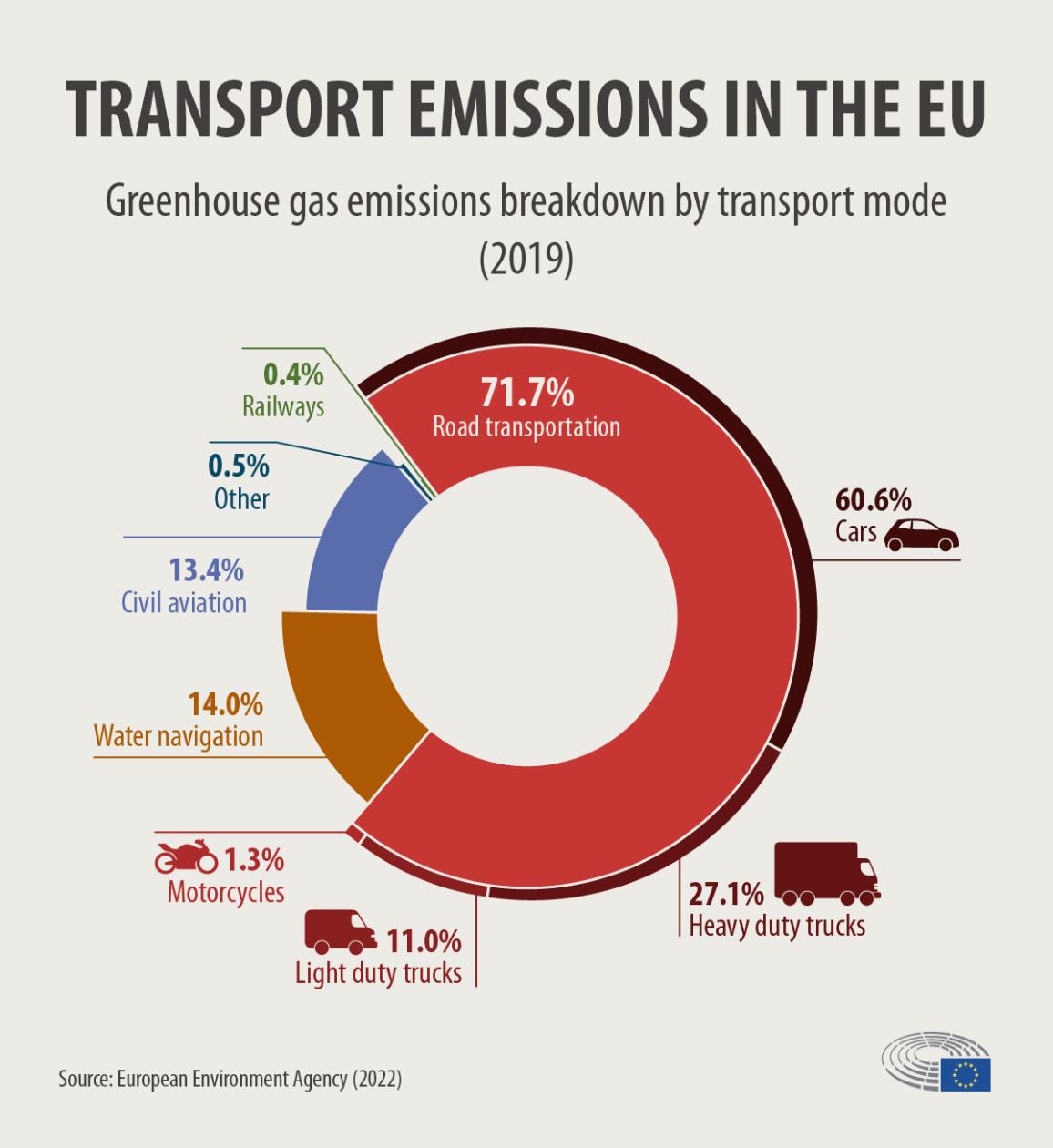CO2 emissions from cars: facts and figures (infographics)
Ever wondered how much CO2 is emitted by cars or whether electric vehicles really are a cleaner alternative? Check out our infographics to find out.
Transport was responsible for about a quarter of the EU’s total CO2 emissions in 2019, of which 71.7% came from road transportation, according to a report from the European Environment Agency.
The EU aims to achieve a 90% reduction in greenhouse gas emissions from transport by 2050, compared with 1990. This is part of itsefforts to reduce CO2 emissions and achieve climate neutrality by 2050 under the European Green Deal roadmap.
Transport emissions on the rise
Transport is the only sector where greenhouse gas emissions have increased in the past three decades, rising 33.5% between 1990 and 2019.
Significantly reducing CO2 emissions from transport will not be easy, as the rate of emission reductions has slowed. Current projections put the decrease in transport emissions by 2050 at only 22%, far behind current ambitions.
Cars major polluters
Road transport accounts for about a fifth of EU emissions.
CO2 emissions from passenger transport varies significantly depending on the transport mode. Passenger cars are a major polluter, accounting for 61% of total CO2 emissions from EU road transport.
At the moment average occupancy rate was only 1.6 people per car in Europe in 2018. Increasing it by car sharing or shifting to public transport, cycling and walking, could help to reduce emissions.
Are electric cars cleaner?
There are two ways to reduce CO2 emissions from cars: by making vehicles more efficient or by changing the fuel used. In 2019, the majority of cars road transport in Europe used diesel (67%) followed by petrol (25%).
However, electric cars are gaining traction, representing 17.8% of all new registered passenger vehicles in 2021, a significant increase from 10.7% in 2020.
Sales of electric vehicles - battery electric vehicles and plug-in hybrid electric vehicles - have surged since 2017 and tripled in 2020 when the current CO2 targets started to apply.
Electric vans accounted for 3.1% of the market share for new registered vans in 2021.
To calculate the amount of CO2 produced by a car, not only the CO2 emitted during use must be taken into account, but also the emissions caused by its production and disposal.
The production and disposal of an electric car is less environmentally friendly than that of a car with an internal combustion engine and the level of emissions from electric vehicles varies depending on how the electricity is produced.
However, taking into account the average energy mix in Europe, electric cars are already proving to be cleaner than vehicles running on petrol. As the share of electricity from renewable sources is set to increase in the future, electric cars should become even less harmful for the environment, especially given EU plans to make batteries more sustainable.
However, efforts to improve the fuel efficiency of new cars are also slowing.
EU targets to reduce road transport emissions
The EU is introducing new CO2 emission targets, which aim to cut harmful emissions from new passenger cars and light commercial vehicles (vans).
The new legislation sets the path towards zero CO2 emissions for new passenger cars and light commercial vehicles in 2035. Intermediate emissions reduction targets for 2030 are set at 55% for cars and 50% for vans.
The Parliament and EU countries reached an agreement on the final form of the rules in October 2022. It was approved by Parliament in February 2023 but still has to be formally endorsed by the Council.
Learn more about the new CO2 targets for cars and the EU ban on the sale of new petrol and diesel cars from 2035
Other EU measures to cut transport emissions
To reduce emissions from road transport, the EU intends to complement the proposed CO2 targets for cars and vans, with:
- a new emissions trading system (ETS) for road transport and buildings
- increased share of renewable transport fuels
- the removal of tax advantages for fossil fuels
- a revision of the alternative fuels infrastructure legislation to expand capacity
Read more about renewable hydrogen, a clean fuel MEPs are looking into.
In addition to setting targets for car emissions, MEPs are reviewing other measures for planes and ships: including maritime transport in the emissions trading scheme; revising the scheme for aviation; and proposing more sustainable fuels for aviation and ships. Despite aviation and shipping only accounting for about 8% of the EU’s total emissions, their emissions continue to increase.
Check out our infographic on the EU's progress towards reaching its 2020 climate change targets
More on making cars and vans more sustainable
-
(open in a new tab)
Procedure file
- Study: CO2 emission standards for new cars and vans (February 2022)


